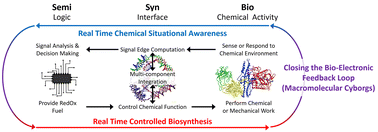Synthesizing the biochemical and semiconductor worlds: the future of nucleic acid nanotechnology
Abstract
Since its inception nearly 40 years ago [Kallenbach, et al., Nature, 1983, 305, 829; N. C. Seeman, J. Theoretical Biology, 1982, 99, 237], Nucleic Acid Nanotechnology (NAN) has matured and is beginning to find commercial applications. For the last 20 years, it has been suggested that NAN might be an effective replacement for parts of the semiconductor lithography or protein engineering workflows. However, in that time, these incumbent technologies have made significant advances, and our understanding of NAN's strengths and weaknesses has progressed, suggesting that the greatest opportunities in fact lie elsewhere. Given the commitment of resources necessary to bring new technologies to the market and the desire to use those resources as wisely as possible, we conduct a critical examination of where NAN may benefit from, and provide benefit to, adjacent technologies and compete least with market incumbents. While the accuracy of our conclusions may be limited by our ability to extrapolate from the current state of NAN to its future commercial success, we conclude that the next promising direction is to create a bridge between biology and semiconductor technology. We also hope to stimulate a robust conversation around this technology's capabilities with the goal of building consensus on those research and development efforts that would advance NAN to the greatest effect in real-world applications.

- This article is part of the themed collections: Emerging concepts in nucleic acids: structures, functions and applications and Recent Review Articles


 Please wait while we load your content...
Please wait while we load your content...